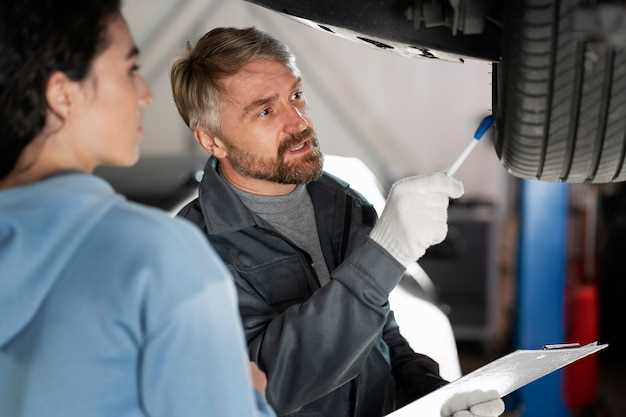
When considering the purchase of a pre-owned vehicle, it is crucial to conduct a thorough inspection before finalizing the deal. A pre-sale vehicle inspection checklist serves as an essential tool for buyers, ensuring that they are making an informed decision about their investment. This systematic approach not only helps in identifying potential issues but also strengthens the buyer’s negotiating position.
Understanding what to look for during a vehicle inspection can save you from future headaches and unexpected expenses. A comprehensive checklist allows buyers to examine various aspects of the vehicle, including the exterior, interior, mechanical components, and documentation. By focusing on these key areas, prospective owners can gauge the overall condition and reliability of the vehicle.
This article will guide you through the essential components of a pre-sale vehicle inspection checklist, empowering you to make a confident purchase. From assessing the tire tread depth to checking the engine performance, being diligent in your inspection process can lead to a successful transaction and a satisfactory ownership experience.
Critical Exterior Checks: Identifying Body and Paint Issues

When considering a vehicle purchase, conducting a thorough exterior check is essential for identifying potential body and paint issues. Start by examining the overall alignment of body panels. Uneven gaps between panels can indicate previous accidents or poor repairs. Pay close attention to the doors, hood, and trunk; they should close smoothly and fit snugly against one another.
Next, inspect the paintwork for inconsistencies. Look for mismatched colors, which may suggest that a panel has been repainted after a collision. Additionally, examine the paint for scratches, chips, or bubbles. These imperfections can signal rusting beneath the surface, which can lead to more significant problems over time.
Furthermore, check for signs of rust, particularly in wheel wells, undercarriage, and along the edges of doors and panels. Rust can spread quickly and compromise the integrity of the vehicle. A flashlight can be helpful for inspecting hard-to-see areas and seams where moisture may accumulate.
Finally, assess the condition of any vinyl or plastic trim. Faded, cracked, or peeling trim pieces can indicate the vehicle has been exposed to excessive sunlight or harsh conditions, reflecting a lack of proper maintenance. A detailed exterior check can save buyers from future expenses and ensure a wise investment in their next vehicle.
Key Mechanical Assessments: Ensuring Engine and Transmission Functionality

Conducting a thorough mechanical assessment of a vehicle’s engine and transmission is crucial for potential buyers. Start by checking for any unusual noises during engine operation, which may indicate internal problems. Listen for knocking, tapping, or hissing sounds as these could signal issues that require immediate attention.
Inspect the engine oil quality and level. Oil should have a consistent color and texture, without excessive sludge. Low oil levels may suggest leaks or neglect in maintenance. Additionally, check the engine coolant for contamination, which can affect thermal efficiency and lead to overheating.
Examine the condition of belts and hoses. Cracked or frayed belts can result in mechanical failure, while worn hoses may lead to fluid leaks. Ensure that all connections are secure and free from any signs of wear.
Next, evaluate the transmission fluid. Its color should be a clear red, not brown or burnt. Check the fluid level as low levels can impair transmission performance. A burnt smell may indicate that the transmission is overheating, which is a red flag.
Perform a test drive to assess the vehicle’s performance. Pay attention to how the transmission shifts gears. Smooth transitions without hesitation or slipping are signs of a healthy transmission. Any delays or rough shifts may indicate internal wear and should be further investigated.
Lastly, use diagnostic tools to run a computer check on the vehicle’s engine and transmission systems. This can reveal trouble codes that may not be immediately apparent during a visual inspection or test drive. By carefully checking these components, buyers can ensure they are making an informed decision about the vehicle’s mechanical reliability.
Interior Condition Review: Evaluating Comfort and Safety Features
When considering a pre-sale vehicle, it is crucial to conduct a thorough interior condition review. This evaluation not only affects comfort but also significantly impacts safety during your driving experience. Begin by checking the upholstery for any signs of wear, stains, or unusual odors. All seating should be intact, showing no excessive fraying or punctures that may compromise comfort.
Next, evaluate the dashboard and controls. Ensure that all gauges are functioning correctly and check for any warning lights that might indicate underlying issues. Test the air conditioning and heating systems to ensure they operate efficiently. Proper climate control is essential for maintaining comfort, especially during extreme weather conditions.
Pay close attention to the safety features within the vehicle’s interior. Verify the functionality of seatbelts, confirming they latch securely and retract smoothly. Inspect the existence and condition of airbags; any visible damage can indicate previous accidents, which may affect safety ratings. Always check the child safety locks if planning to drive with younger passengers.
Additionally, examine the visibility within the interior. Ensure that the windows are clear and free from cracks, and check windshield wipers for wear. A clean and unobstructed view is vital for safe driving.
Finally, assess storage options and convenience features. Ensure that storage compartments function properly, giving you ample space for personal items. Features such as cup holders, charging ports, and infotainment systems should also be tested for usability, as they contribute to overall comfort and convenience.
In summary, a comprehensive interior condition review during the pre-sale process is essential in ensuring that the vehicle meets both comfort and safety standards, providing confidence for any potential buyer.



